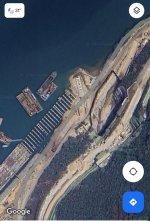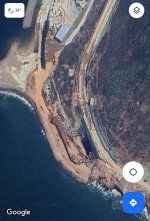At some point, we need to make something out of sunk cost.
With SSNs becoming a viable high-end option, a reassessment of the sub plan is due, simple as that. In all likelihood, we aren't gonna go ahead with P75I until & unless that happens.
We already indigenized most of Scorpene. Would be a waste of billions of dollars and nearly two decades of time if we don't build at least another 6-9 upgraded versions of those (including FC-AIP, LIB and maybe even a VLS module plug-in like the Korean SSKs).
Something tells me, that's what we'll eventually end up doing. We'll see...the track record of P75I means there's no reason to assume it'll happen until it does.
Your argument goes against reality. Navantia's S-80 Plus is basically Scorpene, it should have been their natural choice. The same for Navantia, how much ToT would they need to transfer when MDL has already manufactured Scorpenes? The fact that they don't care about such things is far more important.
So basically nothing except the hull is going to be off-the-shelf. Our own CMS & probably (given the timeline) our own AIP. I just don't see this as viable. 15 years back, maybe. But certainly not now.
I think it's more beneficial to just go for a fully indigenous SSK program (P76) which would essentially be our own enlarged Scorpene with full IP control that would deliver in next decade. And just keep building Scorpenes until then.
P76 is still far away. It's not gonna meet the IN's timelines, especially with the P75I already delayed.
I'd basically say P75I or Barracuda/Yasen M production.
Like I said, the focus on foreign system is a 16-year old assessment. Right now it depends on how soon the Spanish can get theirs ready. If they take too long, the whole thing becomes unviable.
The entire 75I was based on the premise that there are ready-to-buy solutions to choose from. That is now clearly not the case & there's gonna be a lot of waiting & uncertainty involved in this as well*
*unless we go G2G.
If IN says they are willing to wait, I doubt it will be long. Or they proceed with single vendor.
Not possible for it to be same as 75I.
Tejas Mk-1A can roll off the same hot production line we have for Mk-1. But the Mk-2 can't. It'll need all new infrastructure & jigs. Same for Scorpene & 75I.
Not really. Present infra can be scaled up for any size. Shipyard jigs are like workbenches. You can build a small ship or a large ship using the same infra. It's size and weight that are constraints. MDL would have taken SSN production into the equation.
Track record says Navy is in no hurry whatsoever.
Cuz if you ask me, Navy itself doesn't yet know if they should be buying 75I in its current form. But the plan drawn in 90s requires them to pursue a procurement effort until otherwise told, so they'll keep the RFP up.
But an actual deal? Probably not.
The IN is in a hurry. Today they are only guaranteed 9 Scorpenes and 1 Akula out of a minimum 18. If we go for P75I and P75A alone, we won't get to 24 subs until the 2050s.
That's why the high-low mix.
SSNs on high-end, SSKs on low-end.
It's not hi-lo though. Both are for the high-end requirement. In India, the idea behind hi-lo is just cost, and mainly operating cost. And an SSK is gonna cost more than an SSN. For example, MKI and Rafale are the hi-lo mix. We basically need a cheaper jet that can do as much or more than the MKI, which is why the MKI was the standard we used to judge the contenders' technical characteristics.
When it comes to capability, we want our SSKs and SSNs to pretty much do the same stuff. SSNs just tend to be more lethal and require less babysitting. So there is no hi-lo concept here, neither financial or capability.







